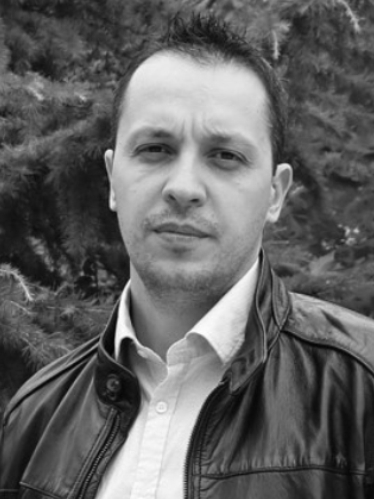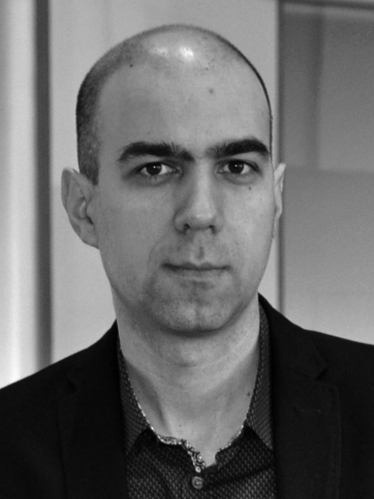SHARE Architects OMNIA Awards
Excellency and active involvement count!
For noteworthy accomplishments in the fields of architecture, as well as for the role played in developing significant architectural projects throughout his career, the SHARE Architects Opera Omnia Distinction went to: TRAJKO DIMITROV( Bulgaria), PETRAQ KOLEVICA (Albania), MIMOZA NESTOROVA TOMIĆ (North Macedonia), MAKS VELO (Albania), ŠPELA VIDEĆNIK (Slovenia), KATALIN CSILLAG and ZSOLT GUNTHER (Hungary), ALEXANDRU BELDIMAN (Romania), ALEKSANDAR STJEPANOVIC (Serbia), ATANAS PANOV (Bulgaria), ROMUALD LOEGLER (Poland), NICOS VALSAMAKIS (Greece), CSABA NAGY & KÁROLY PÓLUS (Hungary), SALI SPAHIU (Kosovo), Atelier 4 founded by TAMARA EFTIMI (Albania), VEDINA BABAHMETOVIĆ (Bosnia and Herzegovina). arh. TRAJKO DIMITROV (North Macedonia), arh. DIMITRIS ANTONAKAKIS (Greece), arh. IVO PETROV (Bulgaria), arh. GHEORGHE HEREȘ (Romania), arh. MARTIN GULESKI (North Macedonia), arh. BRANISLAV MITROVIC (Serbia), arh. Gheorghe Telipiz (Republic of Moldova), arh. Maksim Mitrojorgji (Albania), arh. Lulzim Nixha (Kosovo), arh. Majda Kregar (Slovenia), arh. ANGEL ZAHARIEV & ASSEN MILEV (Bulgaria), arh. THEOHARIS DAVID (Cyprus), arh. NICOLAE ȚARIC (Romania), arh. GHEORGHE BULAT (Republic of Moldova), arh. KADRUSH GREZDA (Kosovo), arch. FLORIN MEDVEDOVICI, arch. ADRIAN ZERVA (Romania), arh. DJOKO RADOVANOVIC (North Macedonia).

Trajko Dimitrov
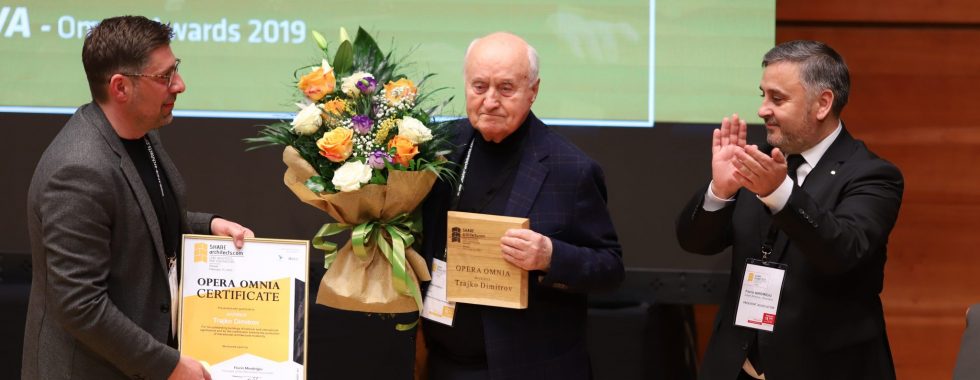
BIOGRAPHY
In 1956 he graduated from the Technical Faculty in Skopje – Architectural department. In 1957, after
his graduation, he started working in the Institute for Housing Construction (today Macedonia
project, Skopje) and remained working there until his retirement in 1990.
Professionally, his main focus was social buildings, especially buildings for sport.
He designed a lot of buildings for sport such as:
– „Sports facility” in Cair and Taftalidze;
– Reconstruction of „Tartan” sports track in the City Stadium of Skopje;
– Basketball facility „Rabotnicki”;
– Stadium „Cair”;
– Universal hall in Prilep;
– Covered swimming pool „Mladost” in Skopje;
– Universal sports hall in Kumanovo.
Apart from the buildings for sport his also well-known buildings are:
– Elementary school „Goce Delcev” in Kavadrci;
– Science museum in Skopje;
– Cultural center „Koco Racin”;
– Business center „Paloma Bjanka” in Skopje.
Significant achievements and recognitions
- In 1965 he won the „Plaque of architecture” about the Port Building for the airport in
Skopje. - In 1973 he won the „ Golden jubilee plaque” for the Universal sports hall in Prilep.
- He won the Gran – Prix award on the 1 st Biennial of Macedonian Architecture for the Universal sports hall in Kumanovo.
- Winner of the „City council charter” in Skopje, about the contribution for restoration and
reconstruction of Skopje. - Bearer of the golden order of labor.

Petraq KOLEVICA
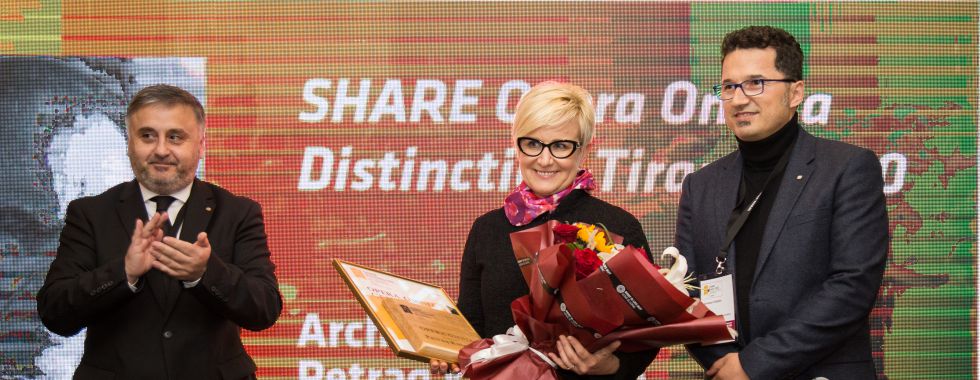
BIOGRAPHY
Petraq Kolevica has played an important role in establishing the modern architecture in Albania, recognized by his appointment as the first Chairperson of the Albanian Association of Architects. In 1957, after graduating from the University, he started working at the Institute of Construction and Design in Tirana, where he designed the apartment building near the former “Partizani” cinema.
Some of Kolevica’s projects that have left traces in the modern Albanian architecture and urban planning of the capital and other cities are Residential Building behind the National Bank of Albania in Tirana, the Office and Residential Building near the Ministry of Justice, Residential Building near the former ‘Bllok’ in Tirana, Residential Building in the so-known Embassy Road, ‘Skenderbej Street’; 7 floors residential Building in Korca (the first in the country at that time), ‘Morava’ school in Korca, etc.
The Korca Library is known for its modern style that has stood the test of time. Kolevica is co-author of the National Museum in Tirana and the former ‘Albania Today’, the biggest exhibition center in the country. During his career, he was regularly confronted with obstacles from the totalitarian system, until he was sent to the ‘Valias’ mine as a construction technician.
Awards:
- Labour Order II, 1983
- Award of the Republic of Albania III, 1984
- ‘Great Master’ award by the President of Albania
- ‘Citizen of Honour’ of the city of Korca
- The Crown of Poetry, 2004
- ‘Great Master of Architecture’ by SHASH – 2019
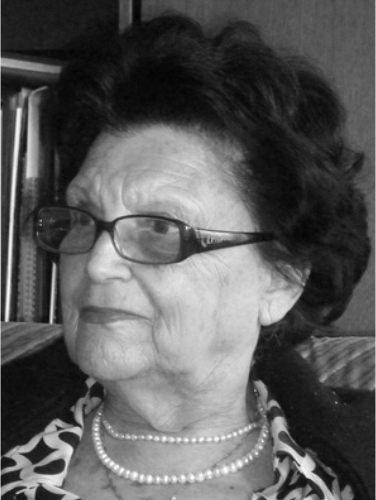
MIMOZA NESTOROVA TOMIĆ
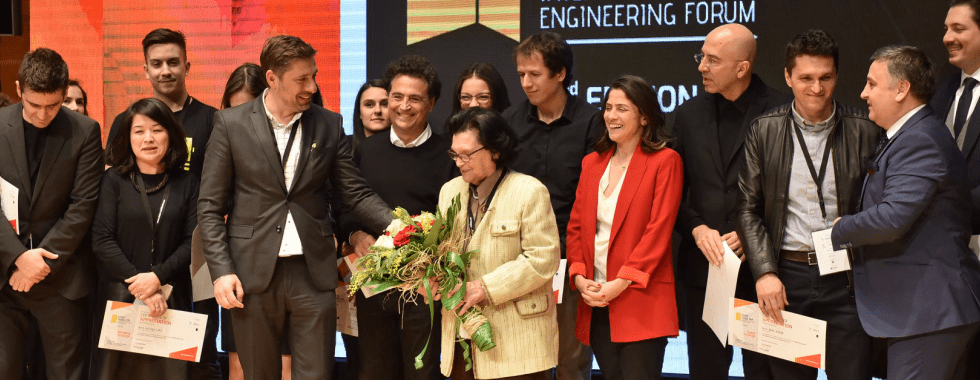
BIOGRAPHY
Mimoza Nestorova-Tomić is a Macedonian architect, planner, and urban designer, who played a significant role in the masterplan and reconstruction of Skopje after the 1963 earthquake. Initially she worked specifically in the team for social planning with Polservice, the Polish consultants, alongside Kenzo Tange, the winner of a United Nations international competition for the reconstruction of Skopje. In the period 1986-1989 Nestorova-Tomić was director of the City Institute for Planning in Skopje. As a female architect working within socialist Yugoslavia, Nestorova-Tomić presents a different trajectory to her counterparts in the West.
In 1964 she joined the Institute of Urbanism and Architecture in Skopje where she worked in a team with architectural conservationists, consultants, and engineers on the project for the reconstruction and restoration of the Stara Charshija (Old Bazaar), a large area of Ottoman urban morphology, including significant Ottomon architectural edifices, mosques and hamams, on the north side of the Vardar river in Skopje. This was a key component of the reconstruction of Skopje. It was followed with the project on the restoration of the historical Ottoman structure of Sulei Inn and constructing the department store, ‘Skopjanka’ in Skopje.
Mimoza Nestorova-Tomić got the Andreja Damjanov award in 2011, a national award given to an individual who has made significant contribution. She has been a model architectural figure in the Republic of Macedonia. In the first volume of Konstantinovski’s encyclopaedic publication, one of the very few publications on Macedonian architects, Mimoza Nestorova-Tomić is one of 39 female architects out of 276 architects represented. Along with a few other women, Nestorova-Tomić played a significant role in the production of Macedonian architectural modernity.
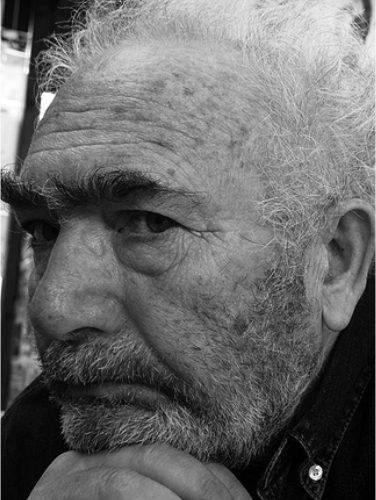
MAKS VELO
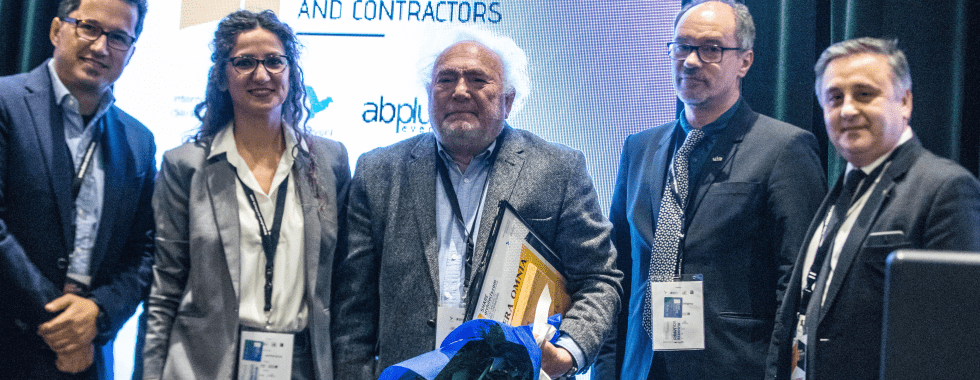
BIOGRAPHY
Architect Maks Velo (Albania) – Founder of Maks Velo architects. Maks Velo was born in Paris on August 31, 1935. After his birth, the Velo family returned to Albania, in the city of Korça, where Max has spent his childhood. After finishing the gym, he continues his studies at the Polytechnic Institute, in the engineering branch. He then specializes in architecture and in 1960 participates in the first project in Tirana. He worked further at Tirana’s design bureau. The years ’73 coincided with the beginning of a very difficult time of his life, because during this time he was arrested and sentenced to ten years in prison for modern tendencies in architecture and art, and consequently burned 250 works. His persecution and punishment continued for 18 years from 1973 to 1991.
In addition to the architect’s profession, he also creates and composes in some genres of art such as painting, sculpture, prose, poetry, and publicity, as he is constantly engaged in public affairs on issues of urbanism, architecture and various intellectual engagements in the entire Albanian territory.
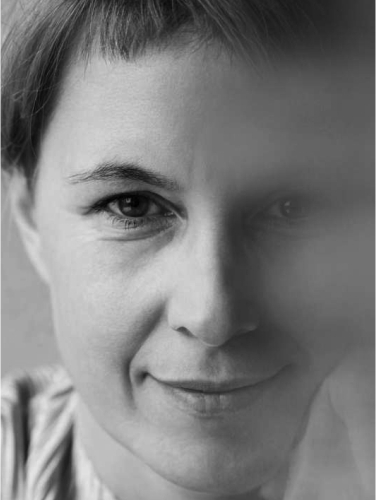
ŠPELA VIDEĆNIK
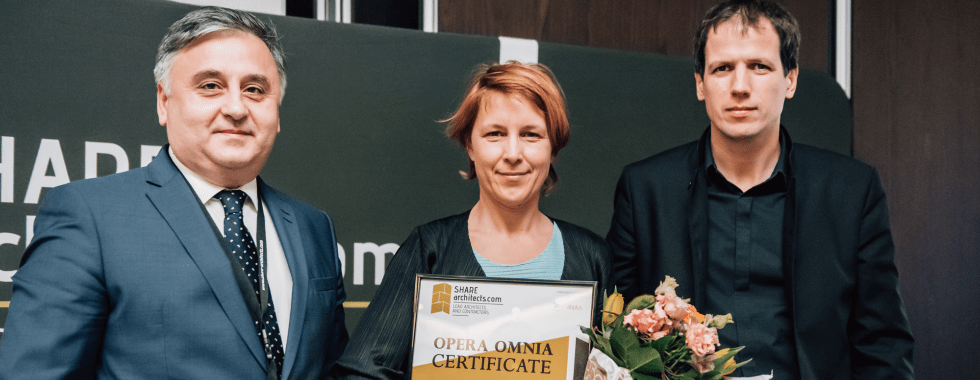
BIOGRAPHY
Špela Videčnik graduated from the Ljubljana School of Architecture and London’s Architectural Association and established OFIS Arhitekti in 1998 along with her colleague Rok Oman. Their ambitious projects and architectural attitudes made Zaha Hadid to nominate them among the top 10 exceptional emerging architects for Phaidon 10×10, while the Guardian designated their office as one of five young architectural offices ‘to look out for’ in 2001.
They have undertaken a diverse range of projects, from renovation to new-build and research prototypes, from small to large scale projects for many types of facilities. Their flexibility is the key to an architecture that responds to the ever-changing conditions in modern times. Most of their work is the result of winning competitions, including the student residence on Route des Petits Ponts in Paris and the Football Stadium Bate Arena in Belarus. Over the years, the two have realized numerous buildings in their home country of Slovenia, as well as in Germany, the UK, France and Spain and they are deeply involved in advocating the European and local Slovenian identity into a contemporary approach of architecture.
Awards of the office:
- the RIBA Architectural Review and Design Awards, London
- the Miami Biennial Honors – Villa Under-Extension in Bled
- Mies van den Rohe Awards – Commendation for Housing on the Coast (2007); Football stadium Maribor (2008); Shopping roof apartments (2008); Farewell Chapel (2010)
- the IOC/IAKS award, silver medal – Football Stadium Maribor (2009)
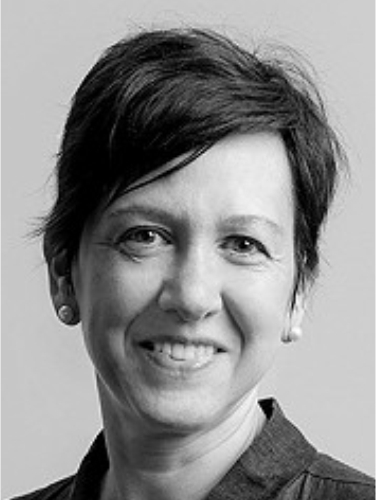
KATALIN CSILLAG
BIOGRAPHY
Katalin Csillag is one the leading designers of 3H architecture. She has completed her studies in architecture at the Technical University, Budapest. She got her degree in 1992. She has worked as an architect in Graz by Helmut Zieseritsch between 1992 and 1994. In 1994, she founds 3h architecture with Zsolt Gunther. She finishes the Master School in 2002. Lectures, reviews as visiting architect, contributions to exhibitions in Europe (Budapest, Pécs, Vienna, Linz, Berlin, Amsterdam, Rotterdam (NAI), Copenhagen).
Awards:
- 2015. Architectural Award for Excellence – Project: Geometria Office Building, Budapest
- 2014. Building Industry Award for Excellence – Projekt: Geometria Office Building
- 2012. Building Industry Award for Excellence – Project: Árkád Shopping Centre, Szeged
- 2011. Resource Property Award „Project of the Year” – Project: Árkád Shopping Centre, Szeged
- 2010. Media Architecture Awards – Audience Prize – Project: Institute for the Physically Disabled, Budapest
Nominations:
- 2011. Piranesi Award – Institute for the Physically Disabled, Budapest
- 2011. Mies van der Rohe Award – Institute for the Physically Disabled, Budapest
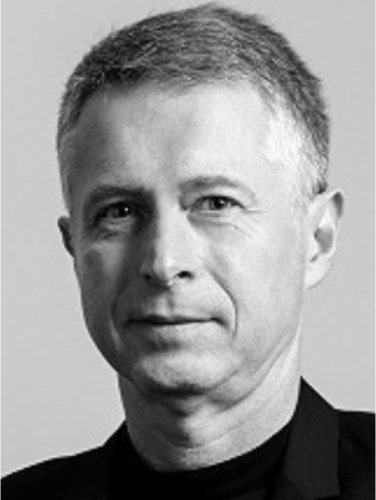
ZSOLT GUNTHER
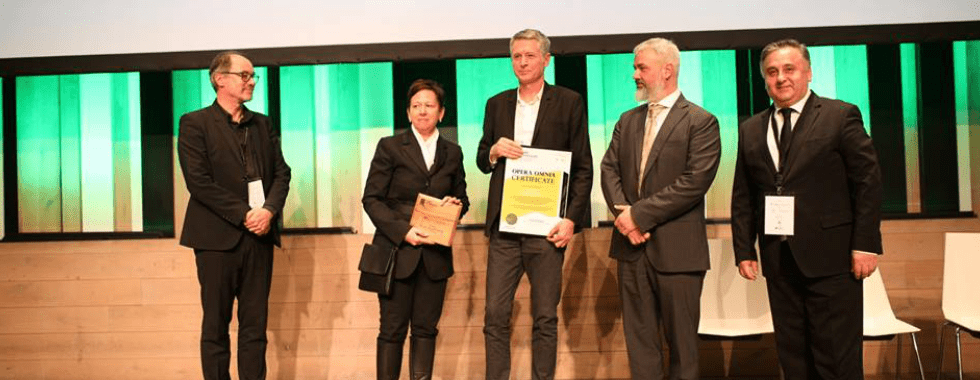
BIOGRAPHY
He graduated at the Faculty of Architecture at the Technical University of Budapest. He accomplished his master classes at the Academy of Applied Arts in Vienna under the leadership of Hans Hollein, one of the pioneers of postmodern architecture. He worked as an associate in various European practices between 1991 and 1994 (Mecanoo, Boris Podrecca, Volker Giencke and Ernst Giselbrecht).
He submits his doctoral degree in 2009 (DLA-degree; title: inverse tradition). By now he is leading 3h architecture together with Katalin Csillag. He devotes himself to architectural research beyond pragmatic design. One of the leaders of MOME Ecolab, founding member of Active House Alliance. He works on the principles of Hungarian social housing within the 4xM group.
Zsolt Gunther won the Hungarian Ybl Prize in 2005. The practice was nominated for the prestigious Mies van der Rohe Award in 2011 with their Institute for physically disabled.
Awards:
- 2015. Architectural Award for Excellence – Project: Geometria Office Building, Budapest
- 2014. Building Industry Award for Excellence – Projekt: Geometria Office Building
- 2012. Building Industry Award for Excellence – Project: Árkád Shopping Centre, Szeged
- 2011. Resource Property Award „Project of the Year” – Project: Árkád Shopping Centre, Szeged
- 2010. Media Architecture Awards – Audience Prize – Project: Institute for the Physically Disabled, Budapest
Nominations:
- 2011. Piranesi Award – Institute for the Physically Disabled, Budapest
- 2011. Mies van der Rohe Award – Institute for the Physically Disabled, Budapest
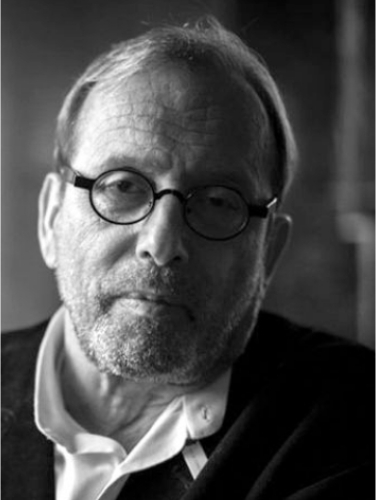
ALEXANDRU BELDIMAN
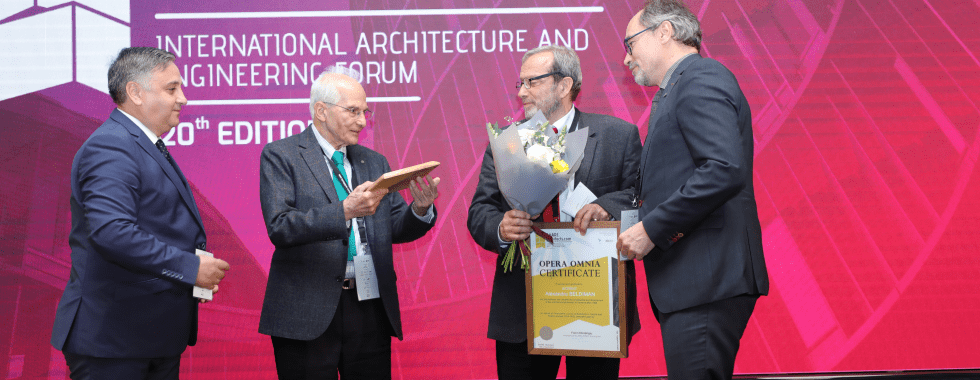
BIOGRAPHY
Born on January 30th, 1943, Mr. Beldiman became architect diplomat of the Ion Mincu University of Architecture in Bucharest in 1967. Two years later he became member of the Union of Architects in Romania (UAR) and acted as its president during 1990 – 1999. He was also vice-president of the International Union of Architects during 1999 – 2002. In 2001, he became member of the recently founded Chamber of Architects in Romania (OAR) and in 2005 of the Town Planners’ Registry of Romania. Ever since 1999, he has been president of the Simetria Foundation for Architecture and Town Planning. Professionally, Mr Beldiman acted as architect within Project Bucharest Institute during 1967 – 1993 and in 1993 became founding associate of the BBM Group office for architecture, where he currently functions as well.
Mr. Beldiman’s career comprises numerous works of architecture and restoration, whose value brought him in a great number of technical committees, international juries and research projects. He has also accomplished a valuable academic activity acting as professor with the Ion Mincu University of Architecture, and also as author of numerous publications, as lecturer within international conferences and as exhibitor and editor. In 1996, he acted as Romania’s curator for the Venice Biennale of Architecture and during 1994-1999 he acted as coordinator of the Bucharest Biennales of Architecture.
In recognition of his great professional achievement, Mr. Beldiman became member of honor of OAR in 2013, and received numerous awards and distinctions, such as the Duiliu Marcu Award for Architecture from Romanian Academy, the Bene Merenti medal of the Ion Mincu University of Architecture and the Faithful Service as Commander national order.
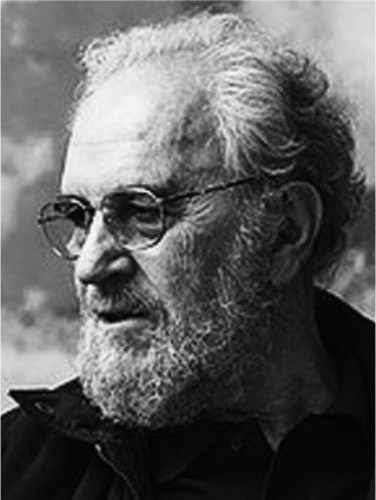
ALEKSANDAR STJEPANOVIC
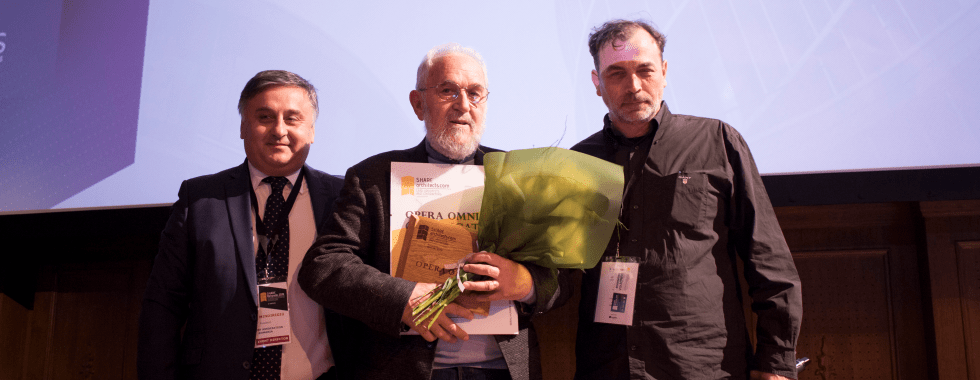
BIOGRAPHY
After graduating from the Faculty of Architecture in Belgrade in 1957, Aleksandar Stjepanovic was employed in the Town Planning Institute. In 1963, around the time of important achievements in architectural competitions in Belgrade and Zagreb, he became an assistant at the home university. Habilitated in 1972 and his work verified in 1977, while a professor at Belgrade University became the 1988th year. In this profession he served as dean of the 1983rd to 1987th and the provost of the 1977th 1979th year.
He was president of the Association of Belgrade Architects (since 1995) and the Union of Architects of Serbia, a member of the editorial board of the magazine “Architecture-Urbanism”. Is an architectural and urban design, of interior architecture and publishing business. His body of work includes over 80 projects, of which more than a third were realized. On the proposal of fellow previous winners of the highest honors the Union of Architects of Serbia, won the Grand Prize for Architecture in 1992. Year. It is also the holder of two of Belgrade (1975th and 1978), central government awards the daily “Borba” (1975), awards ULUPUDS (1993), as well as the Grand Prize (1975) and special recognition Salon of Architecture (1993). He was a founding member of the Initiative Committee of the Academy of Architecture of Serbia (1995).
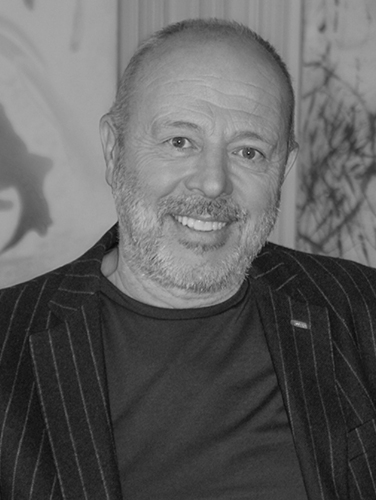
ATANAS PANOV
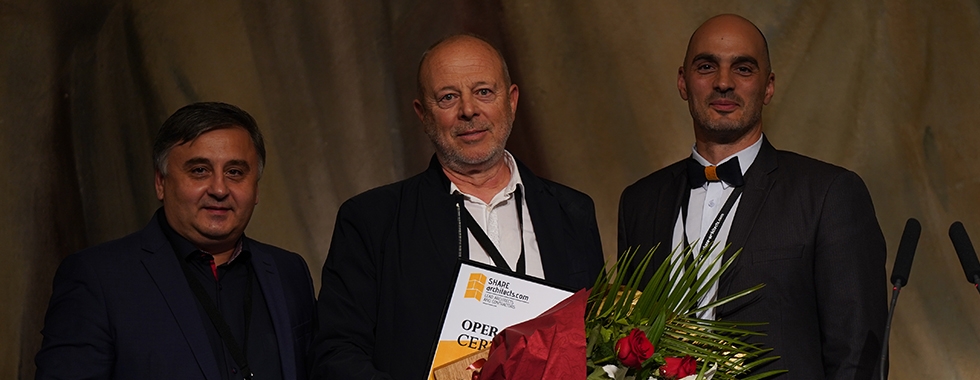
BIOGRAPHY
LP Consult Ltd., established in 1998, is the successful product of the professional evolution started in 1989 from the small architectural studio called IRA – Atanas Panov Project, founded by Atanas Panov and Lorita Panova. Possessing extensive experience in some of the leading design collectives in Bulgaria at that time, such as those led by the prominent architects Lozanov and Tomalevski, Atanas Panov and Lorita Panova established a design oriented firm dedicated to combining functionality, esthetics, and efficiency. Gradually the bureau started providing additional services such as consultancy on project planning and construction.
Many of the projects designed by the company are trend-setting for the contemporary Bulgarian architecture. Designs, buildings, and some of the company’s leading architects are laureates and winners of a number of national and international awards, including several Architect of the Year and Building of the Year Awards, and a nomination for the 2005 Mies van der Rohe Award / European Union Prize for Contemporary Architecture.
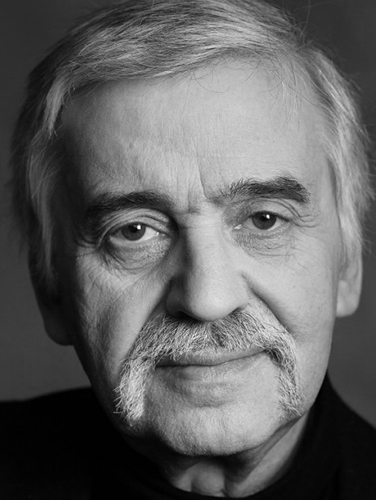
ROMUALD LOEGLER
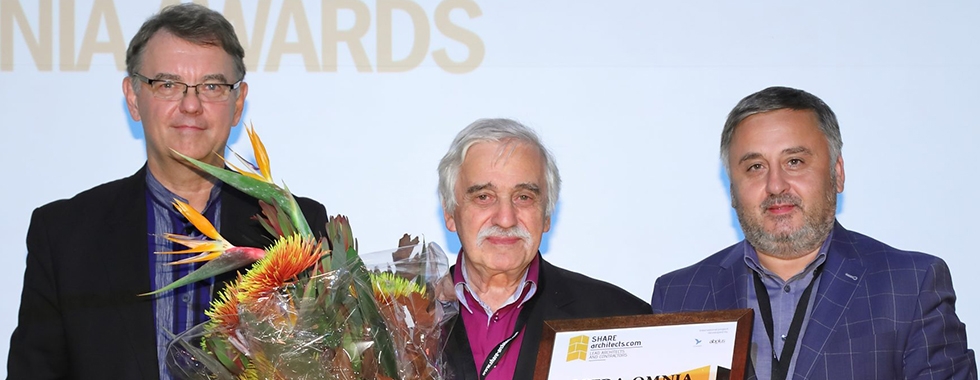
BIOGRAPHY
Professor Romuald Loegler is a well-known and respected Polish architect who is a member of the Association of Polish Architects, a laureate of the SARP honorary award since 1987. Romuald Loegler is the owner of the Krakow architectural office Atelier Loegler.
Romuald Loegler, who was born in a town in south-western Poland in 1940 and graduated from the Faculty of Architecture of Kraków University of Technology in 1964, started his professional practice a year later as a member of the architectural team of the Bureau of Technical Projects and Services in Kraków. Atelier Loegler and partners was founded in 1987 and in 1999 Loegler received a doctorate in technical sciences from the Faculty of Architecture of Warsaw University of Technology.
Apart from practicing architecture, Loegler is active as an animator of architectural life – Romuald Loegler is also a co-creator of the Architecture Biennale in Kraków (1985), former editor-in-chief of the magazine Architect (1985-1991). He has been the chief editor and Partner of the publishing house RAM , which publishes the monthly Architektura i Biznes.
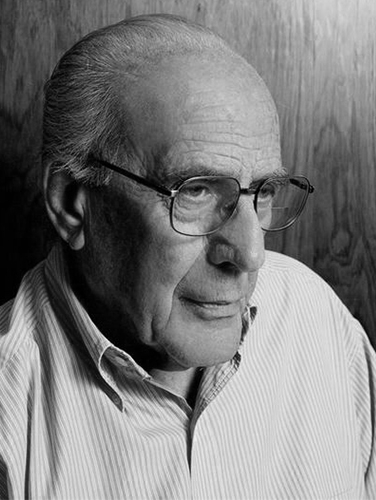
NICOS VALSAMAKIS
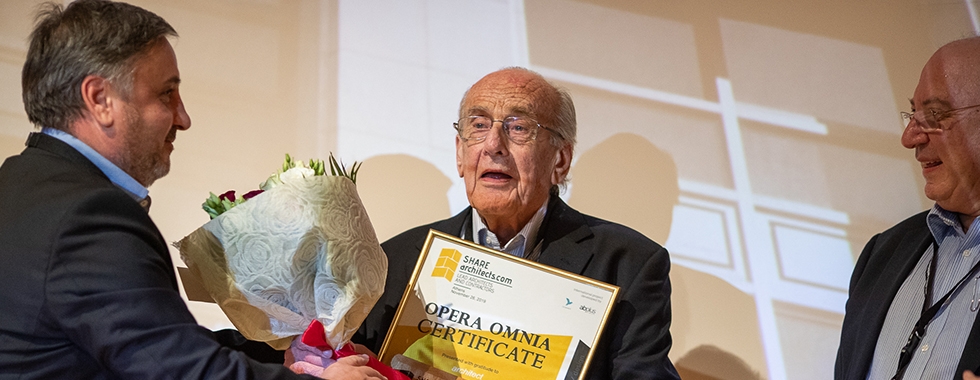
BIOGRAPHY
In November 2001 he was elected Doctor Honoris Causa in the Architectural School of the National Technical Polytechnic School of Athens and in 1993 at the Architectural School of the University of Salonica.
He was president of the Architectural Department of the Technical Chamber in Greece (1962), Vice president of the Architects Association in 1961 and board member in 1960 and 1962. He has been a member of the Greek Architectural Society since 1977 and founding member of the Greek Institute of Architecture (1995).
In 2007 he was elected member of the Academy of Athens.
He has designed a considerable number of public and privately-owned buildings, banks, tourist complexes, schools as well as private villas.
Amongst his most significant projects are the two villas in Anavyssos (1961), the Alpha Bank Headquarters on Stadiou Street (1978-90), the ‘Latsis’ Athens College in Kantza (1986-95), the E.D.P. Centre for the Commercial Bank in Holargos (1990-97), the ‘Daidalos’ Tourist complex on the island of Kos (1999), the ‘Amalia’ Hotels throughout Greece, the residences in Vouliagmeni (1994) and Kilada (2001), and the A.T.E. Insurance Companies Headquarters Building, 173 Syngrou Avenue, Nea Smyrni (1997-2009).
He has received awards for a number of architectural competitions and has been frequently elected to act as an adjudicator in architectural competitions sponsored by the Architects Association.
His work has frequently represented Greek Architecture in exhibitions, both in Greece and abroad and it has been published in the Greek and International Architectural press. His public buildings were presented in the 5th Architectural Biennale in Venice in 1994.
The Museum of Modern Art Network included his own private residence in Philothei in the exhibition held in Milan as well as in Gennaro Postiglione’s book ‘One Hundred Houses for One Hundred Architects, of the 20th century, 2004’ by Taschen Publications, where the house was also illustrated on the front and back covers.
In 2007 an exhibition of his work was held in the Benaki museum.
In March 1999 Nicos Valsamakis was awarded the Distinction in Letters and Arts by the Greek Academy for the total of his work.
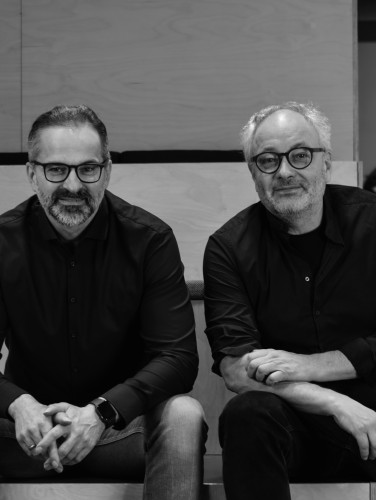
Csaba Nagy & Károly Pólus
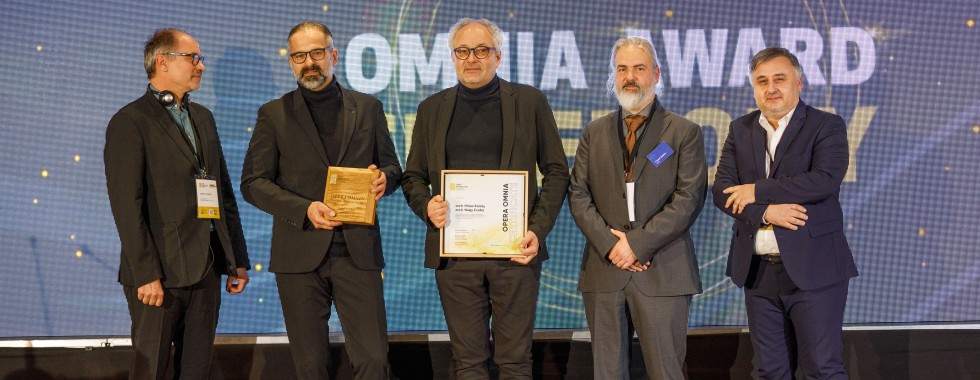
BIOGRAPHY
ARCHIKON Architects is one of the most significant studios in Hungary, which has built an outstanding portfolio regarding both quantity and quality since its foundation in 1989. They always consider the architectural task in terms of the uniqueness of the given program and the complexity of the relevant aspects. Their works include revitalization work with historical monuments, residential, cultural and industrial buildings.
ARCHIKON’s work has won numerous national and international awards, most recently Vizafogó Tagóvoda was shortlisted for the 2022 MIES VAN DER ROHE AWARD. Due to the significance and richness of their work, Csaba Nagy and Károly Pólus are worthy winners of the SHARE OPERA OMNIA AWARD.
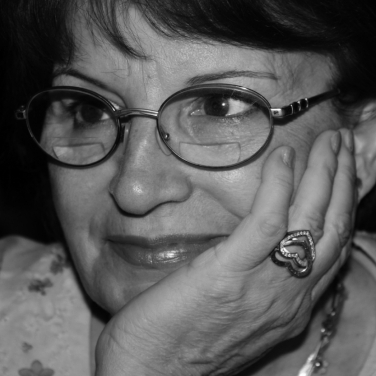
Atelier 4 founded by TAMARA EFTIMI
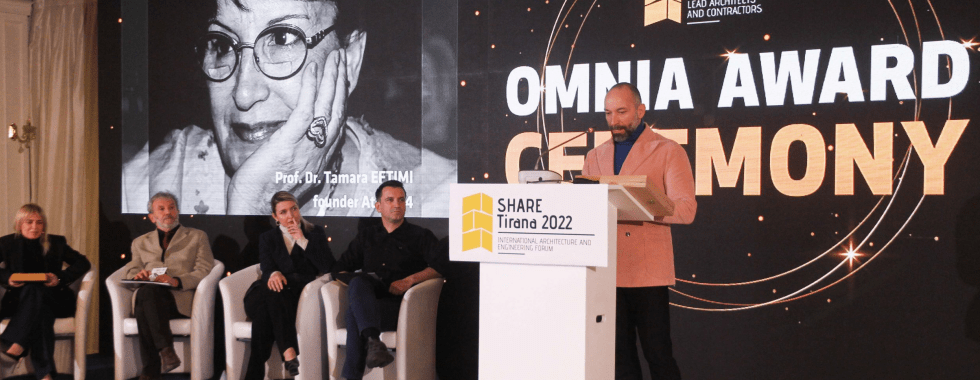
BIOGRAPHY
We feel privileged to have had the honor to celebrate Prof. Dr. Tamara EFTIMI during the IVth Edition of SHARE Tirana 2022, on the 3rd of March. The SHARE OPERA OMNIA award was given in recognition of her valuable contribution in the field of architecture and urban planning, scientific and technological research, and as one of the most prominent personalities for more than four decades, in the academic field, an active influential and contributor to many generations of young architects and consolidated professionals. The award was received by arch. Olsi Eftimi on behalf of the team of ATELIER 4.
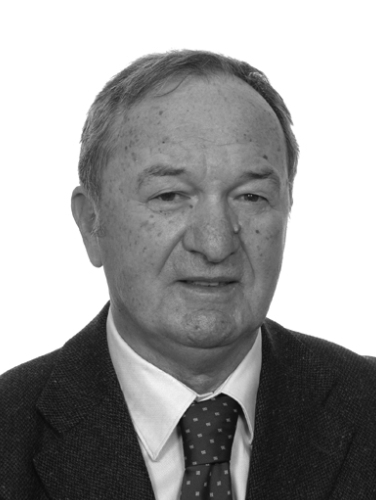
SALI SPAHIU
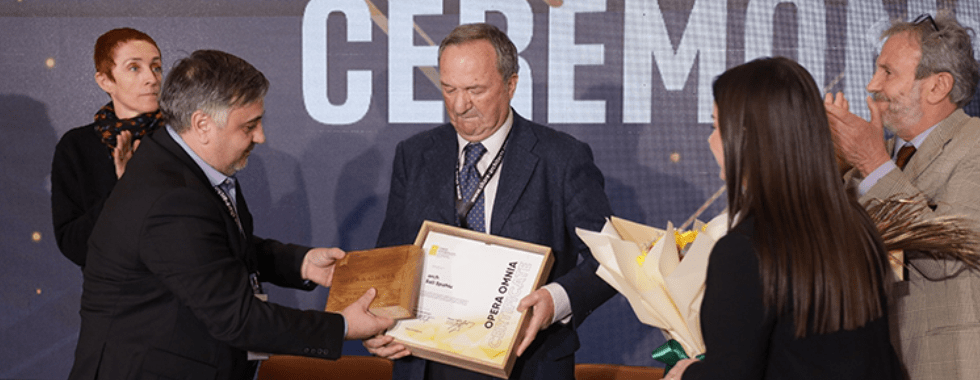
BIOGRAPHY
Architects Association of Kosovo and SHARE Architects are honored to announce the OPERA OMNIA distinction for lifetime achievement in architecture and urbanism was awarded to architect Sali Spahiu, by highly appreciating his contribution to the architectural and urban development of Kosovo. With an impressive career as an architect and professor, Mr. Spahiu has influenced generations of architects by contextualizing the language of modern architecture in Kosovo. His many projects, including the Kosovafilm, make his architecture stand out and become a landmark of excellence in Kosovar architecture.
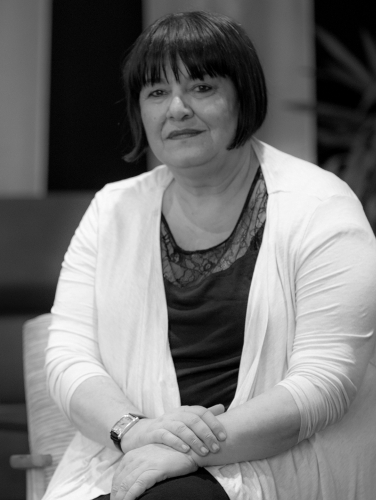
VEDINA BABAHMETOVIĆ
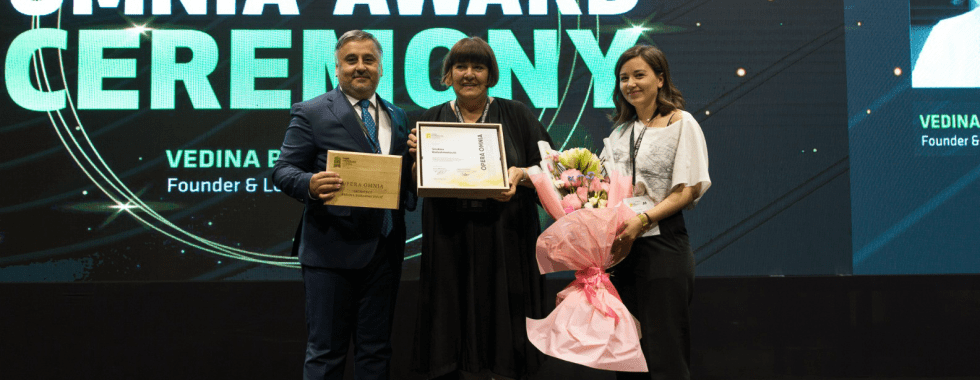
BIOGRAPHY
Vedina Babahmetović graduated from the architecture school of the University in Sarajevo in 1985. Overcoming the career hiatus enforced by the war years in the early 1990s, she founded her independent practice “Entasis” in 1997. Vedina’s patient and hard work have resulted in a growing number of important and large commissions, such as the GMS shopping center in Vitez, the Makovi residential complex in Zenica and the Tisa administrative building in Žepče. These successful realizations truly impress by brave experimentations with materials, programs and typologies. Yet Vedina’s mastery of building is at its most condensed and therefor striking in small, seemingly humble projects, such as “Small administrative building and tall pines” in Zenica and single family house “Hiža Mišljenova” in Puhovac, both of which earned her the Collegium Artisticum Grand Prix – the highest recognition for achievement in architecture awarded by the Association of Architects in Bosnia-Herzegovina (in 2018 and in 2022). By establishing multitude of material and conceptual relations with their surroundings, these small structures dramatically outgrow their physical scale and inspire appreciation and admiration. In that, they are reminiscent of their author’s legacy – Vedina’s impact on Bosnian-Herzegovinian architecture has been too large and important for one career. The Share award (ili kako se već zove) is a welcome opportunity to acknowledge it.
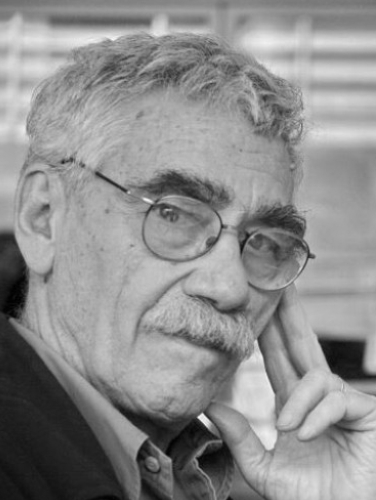
Dimitris Antonakakis
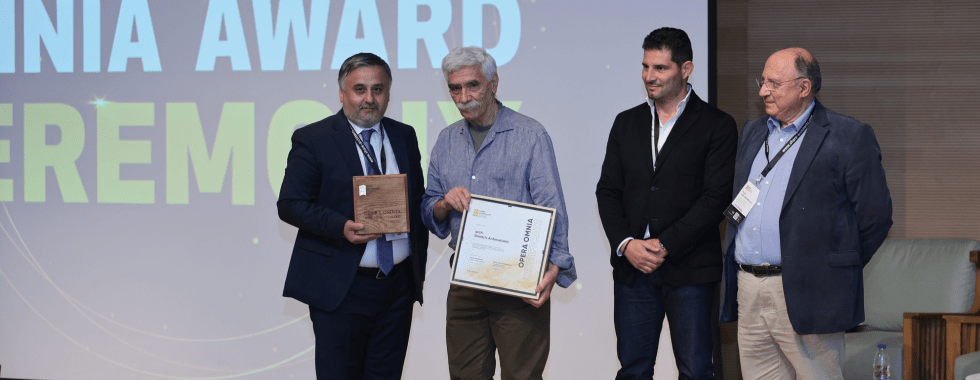
BIOGRAPHY
Architects Dimitris Antonakakis and his partner, Suzana, studied at the School of Architecture of the National Technical University of Athens graduating in 1959 and 1958 respectively, and were taught by professors Panagiotis Michelis, Dimitris Pikionis and Nikolaos Chatzikyriakos Gikas. In the final year of their studies, they were fortunate to have as a teacher and later as a friend the architect A. James Spayer, Mies van der Rohe’s student and collaborator. Since their graduate years Suzana and Dimitris have been partners in life and profession.
In the 1960’s along with their friends and university classmates Efi Tsarmaki – Vrontesi, Eleni Gousi Desilla and Denis Potiris, they co- founded Atelier 66, an architectural practice which welcomed and taught a great number of young architects.
In 1986 Dimitris Antonakakis and Suzana Antonakakis founded A66 – Atelier 66, where they continue to pursue their architectural endeavours. They have achieved international recognition through their architectural design and implementation of important public buildings and private projects during their long career, leading to publications (monographs, journals, books) and exhibitions showcasing their oeuvre in Europe and the United States.
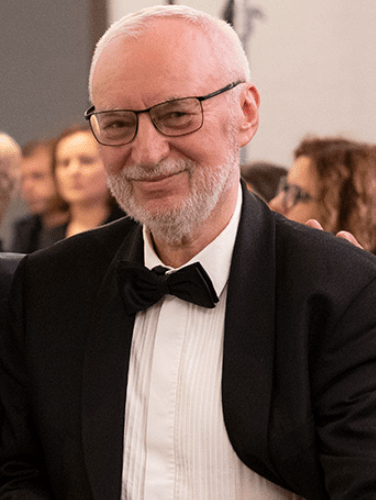
Ivo Petrov
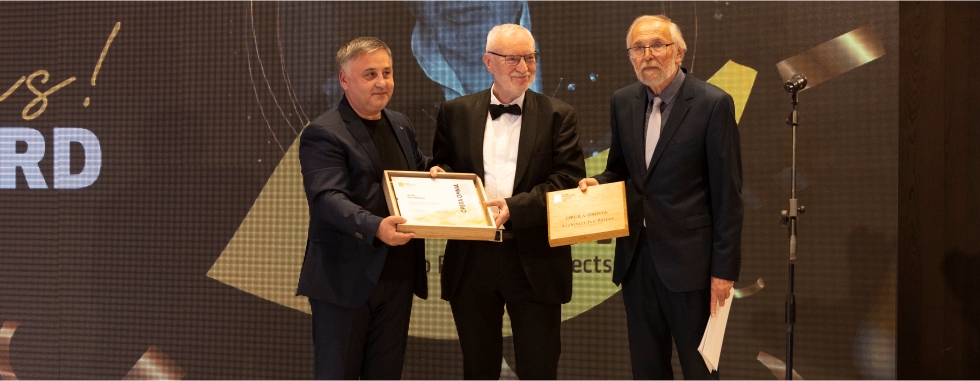
BIOGRAPHY
Arch. Ivo Petrov is an established Bulgarian architect who has contributed to some of the country’s most famous monuments and buildings. He has been honored with the Order of Cyril and Methodius – First degree for great merits in the fields of culture, art, education and science.He started his 50 years career in architecture working at the Design Organization-Pleven. His early projects were the Soviet Technical Center and the Covered Cooperative Market in Pleven.His most notable piece is the Pleven Panorama, which he co-designed with the architect PlamenaTsacheva between 1976 and 1977. It is the only monument of its sort on the Balkan Peninsula.
Ivo Petrov is well-known for his passion and love for theater and art, which have left an indelible influence on his architectural designs. He established the “Ivan Radoev” Drama Theater and the Pleven Museum Complex. In Pleven, Dobrich, and Plovdiv, he has designed theater sets and costumes for over 30 shows.In 1986, he was named deputy director of SDISS – Pleven, where he worked for seven years. In 1993, he established the architectural firm “Ivo Petrov Design,” which is today known as “Ivo Petrov-Architects” – IPA. He developed a complex of scientific institutes in Harare, Zimbabwe, in 1992, and a project in New Jersey, USA, in 1993.
After his return, he participated in four competitions for bank buildings and won 3 of them – Hebros Bank, Bulbank and Pireos Bank, and many well-known projects among which are the administrative buildings of “Agropolihim” – Devnya, “Gloria Palace” – Pleven, villas in Boyana, Simeonovo, Dragalevtsi, Bistritza and more than six hundred projects in Pleven, Sofia, Varna, etc.In 2004, he established the Sofia branch of “Ivo Petrov Architects” and set the fundamentals for one of the most prestigious architectural studios in Bulgaria. Today the studio – Ivo Petrov Architects is managed by his son, arch. Tsvetan Petrov and has become one of the most innovative, future-ready and biggest companies for architecture, urbanism, and interior design in Bulgaria.Ivo Petrov has left a legacy of monuments, buildings, art, and a brilliant team of experts as a result of his 50 years of commitment to architecture, art, and people.
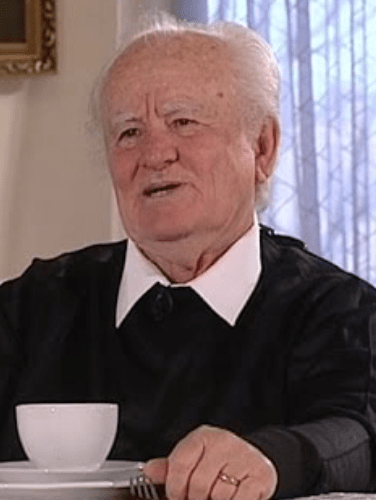
Gheorghe Hereș
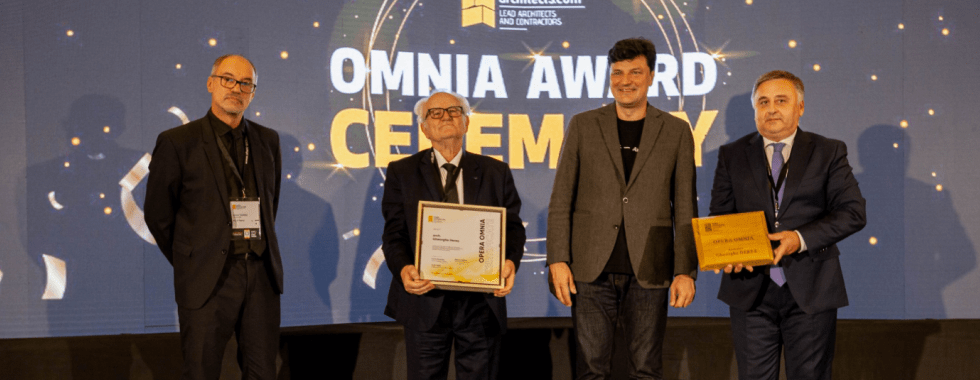
BIOGRAPHY
An important part of the activity of architect Gheorghe Hereș was in the pioneering of typical design, in which he realized the series of collective houses with a structure in concrete diaphragms and, above all, the structure in lamellar frames, original and efficient structural systems, with a favorable impact on the interior space, refining a practice that would. should be resumed in a contemporary approach.
The works elaborated in the field of urban planning and territorial development refer to the details of the systematization of some complexes or major traffic arteries, silhouette and volumetric studies for important complexes or arteries, as well as the participation in contests for the systematization of Independţei boulevard as well as the systematization of the Alexandru cel Bun neighborhood . – Iasi, for taking care of the Architects Union award.
Through the silhouette study of the western cornice of the central area of the city of Iasi, he capitalized and highlighted the ensembles and monuments located in this area: the Church of the Three Hierarchs, the Gh. Asachi School, the Roman Catholic Church, the Metropolitan Ensemble. He also contributed to the enhancement of the historical vestiges of the old Royal Courts, the Church of St. Nicolae Domnesc, the Dosoftei House and the Palace of Culture or the Rîpa Galbenă architectural complex in Iasi, he coordinated the projects for the urban rehabilitation of Lăpuşneanu Street with studies to enhance the value of the Banu Church, the Unirii Museum and the Traian Hotel. In 1997, he worked as the head of the restoration project coordinator at the Agapia Monastery Historical Monument Ensemble. The projects for the foreign market were a unique experience: the Annaser Cultural Center – Algiers and the project for the Palace of the Crown Prince of the UAE in Abu-Dhabi.
Senior dean of Iași architects, Gheorghe Hereș is a constant presence in the life of the city, with a rich activity carried out in over 60 years of career, working assiduously on his initial projects from the first sketches until their implementation.
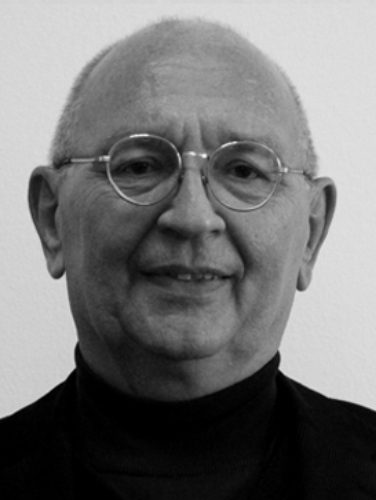
Martin Guleski
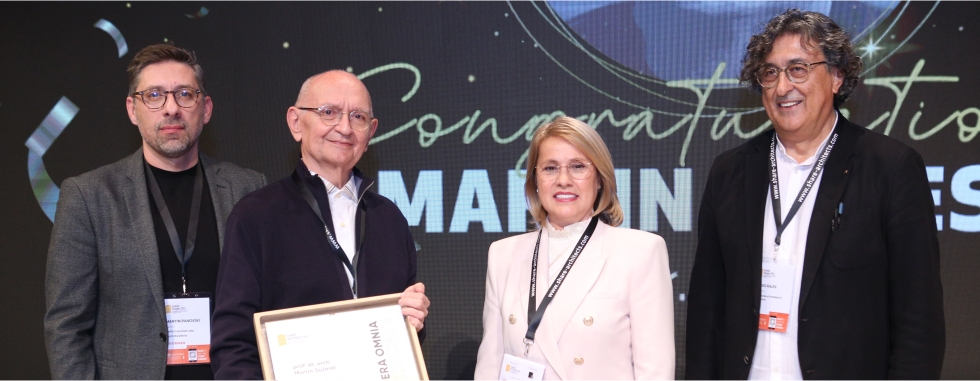
BIOGRAPHY
Since 1991, Martin Guleski has been a permanent associate in the Design Bureau “Atelje Ajvar” in Skopje. The work with the Ajvar group represents further professional upgrading, a basis for theoretical lessons in parallel pedagogical work and, conversely, a check of the educational material in practical activity. The two independent exhibitions 10 and 25 years of architecture within the biennial manifestations of AAM in the premises of the National Gallery Daut Pashin Amam and the Museum of Contemporary Art in Skopje are of particular importance in the professional work in the group, and later in the Ajvar Studio.
In his rich professional career, the architect Martin Guleski is the author of more than 100 projects and 20 realizations. He participated and was awarded in more than 20 domestic and international competitions. He participates in the work of summer schools, architectural workshops, architectural manifestations, exhibitions, editorial offices of architectural magazines and is a member of various expert committees.
Participation in all events of AAM for the architect Guleski are a mandatory challenge for public performance independently or as a member of a team. He is the recipient of awards at architectural events in Macedonia and abroad: he is the winner of the two most prestigious awards given by the Association of Architects of Macedonia – the Grand Annual Award for Architecture of AAM in 2000, as well as the Grand Prix of BIMAS in 2002, both for the building of the “Nova” High School in Skopje (project worked with Prof. Vlatko P. Korobar). In 2008 and 2010, he was part of the teams representing the Republic of Macedonia at the Venice Architecture Biennale, in 2008 as a co-author of the project “Metamak Sections”, and in 2010, as a teacher of the project “Learning from Architecture”.
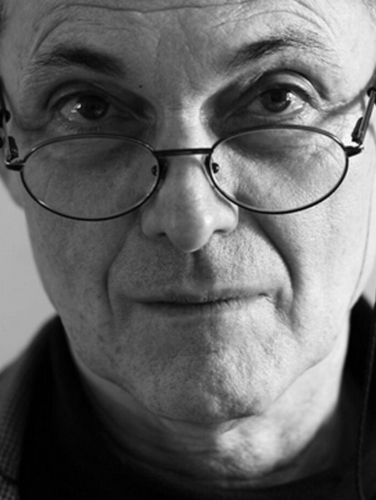
Branislav Mitrović
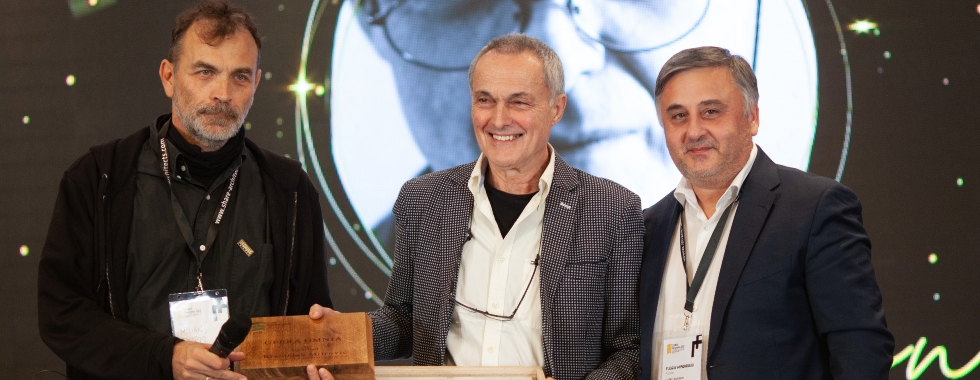
BIOGRAPHY
Involvement of Architect Branislav Mitrović in the affirmation of the profession began with his admission to The Association of Applied Arts Artists and Designers of Serbia in 1977. In the period from 1983 to 1989, he was a member of the Presidency of the Association of Belgrade Architects and of the Presidency of the Union of Architects of Serbia since 1987. He was the President of the Union of Architects of Serbia from 1993 to 2001. Member of Association of the Applied Arts Artists and Designers of Serbia, Association of Belgrade Architects, Union of Architects of Serbia, UIA UNESCO, ISOCARP, WCC; ICOGRADA.
Architect Branislav Mitrović participated in over 150 architectural competitions and won more than 100 awards. Professor Mitrović is the author of about 40 completed works of architecture. He received 40 professional and social awards.
The most significant works of architecture completed by Architect Branislav Mitrović are: Residential building built in 1985 in Užice, Academy of Fine Arts in Belgrade in 1990 together with arch. S. Lazarević, 1996 – Residential building in Višegradska street, Belgrade (co-author arch. Z. Gaković). In 1997, the Zepter Palace in Kralja Petra Street in Belgrade, together with arch. V. Milunović. Residential building in Kumanovska Street in Belgrade. In 2002, the HVB Bank building in Kralja Petra Street in Belgrade. In 2008, family house in Koste Vojnovića Street, Belgrade (co-author J. Kuzmanović), In 2011 Centar Hotel in Novi Sad (J. Kuzmanović, N. Zimonjić, I. Pantić, O. Krašna, S. Tatalović). In 2014 Administrative building of the Hydroelectric Power Plant on Drina River, in the city of Višegrad, Bosnia and Hercegovina (S. Tatalović, O. Krašna), In 2017 condo hotel Kamenovo in Montenegro (S. Tatalović, O. Krašna), Royal Gardens, Budva (Jelena Kuzmanović).
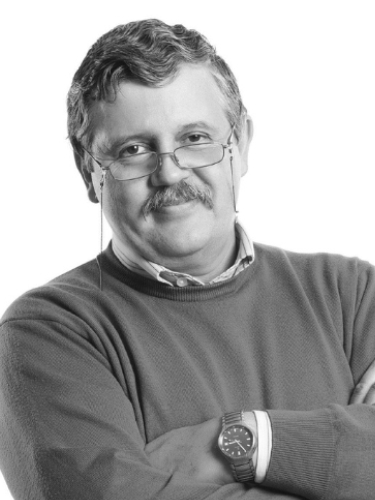
GHEORGHE TELIPIZ
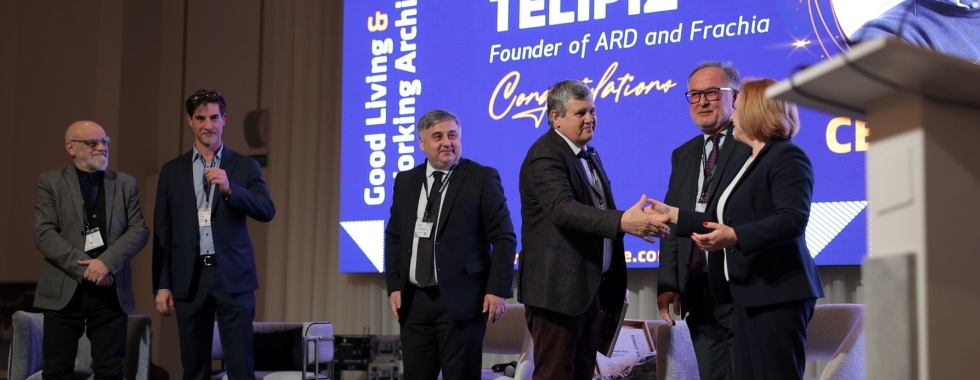
BIOGRAPHY
Gheorghe Telipiz’s dedication to architecture was awarded with the SHARE OPERA OMNIA AWARD in honor of his lifelong contribution to the field of architecture and urban planning, continuous and persistent architectural research, and for his outstanding achievements in the transformation and evolution of architecture in the Republic of Moldova.
The award ceremony took place on 28th February, during the International Architecture and Technology Innovation Forum – SHARE Chisinau 2023, an event organized by SHARE Architects, the largest network dedicated to architecture and construction professionals in Central and South Eastern Europe, in partnership with The Union of Architects from the Republic of Moldova. The award was handed out by arch. Iurie Povar, President of the Union of Architects from Republic of Moldova, arch. Aurelia Carpov, Responsible for international relations within the Union of Architects from the Republic of Moldova, and Florin Mindirigiu, Founder of SHARE Architects.
The architect Gheorghe Telipiz graduated in 1979 from the Faculty of Urbanism and Architecture, the specialty “Architecture” of the Technical University of Moldova. Due to the high-performance results obtained in the educational process, he was employed in the “Chișinăuproiect” Design Institute, which at the time was positioned as one of the most progressive and prestigious architecture and urban planning companies in the capital of the Republic of Moldova. Here, talented designers were concentrated, who became true teachers of the architect Gheorghe Telipiz and who generated great love for the noble profession.
Being a person very capable of mastering all the nuances of the profession, Gheorghe Telipiz obtained the necessary experience to act independently and in 1991 he founded his own company with an architectural-urban design profile “ARD” SRL, which he manages up to the present time. The company specializes in the development of architectural projects for edifices with destinations: residential, civil, commercial, hotel, banking, etc.
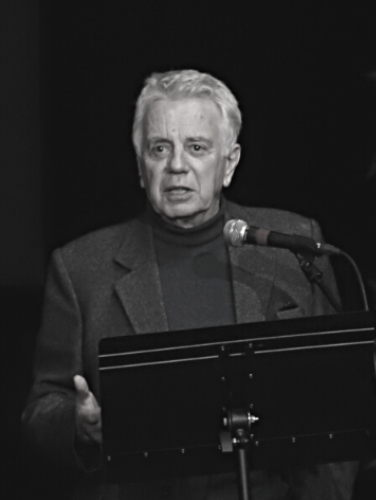
MAKSIM MITROJORGJI
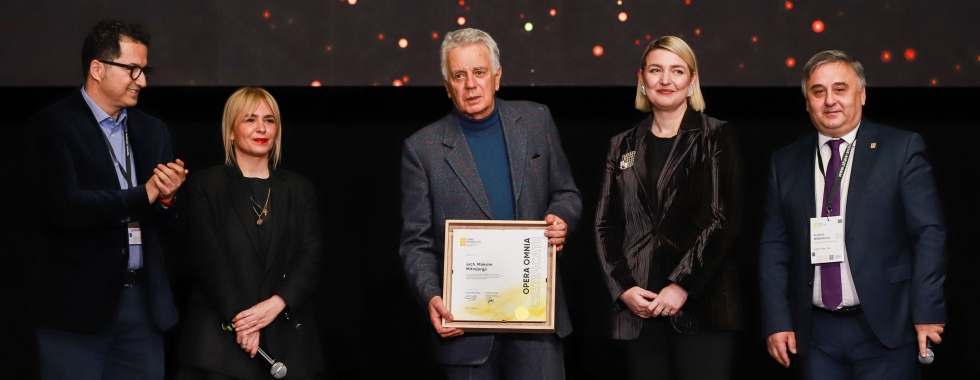
BIOGRAPHY
Maksim Mitrojorgji is graduated as architect from the University of Tirana in 1971. He starts working as an urban planner at the State Institute of Design In Tirana and later is transferred as an engineer in the construction of Fierza hydropower. After that, he returns as Head of Department of design of social-cultural buildings at the Institute of Design in Tirana. He is transferred in Lezha where he works as an implementation engineer in the State construction company and later in the city office of design. After 1990, he created his design studio until 2013. He held the position of General Director of the Albanian Development Fund for 8 years until 2005.
Currently retired, he continues his design work as architect and is committed to teaching at several architectural universities in the disciplines of Design Theory, Architectural Theory, Composition and Architectural Design. In these disciplines, he has given his professional contribution with several academic publications.
He has always been passionate about the Albanian vernacular architecture, and has published several books on the study and analysis of the Albanian vernacular dwelling and the critics of architecture design. This lifework is currently accompanied and enriched with publications of watercolor sketches of vernacular architecture typologies and landscape of Albanian cities in their past. These drawings are presented in the first 2 series of albums “Popular Architecture in watercolor 1 & 2” and is an ongoing work with more publications to come.
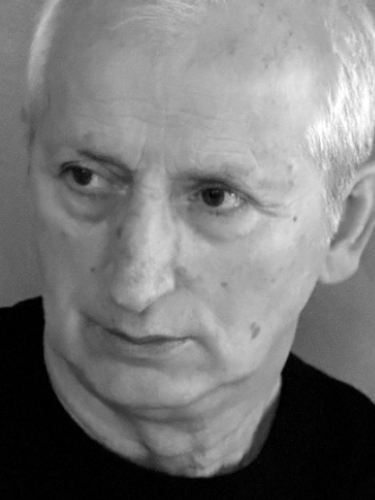
LULZIM NIXHA
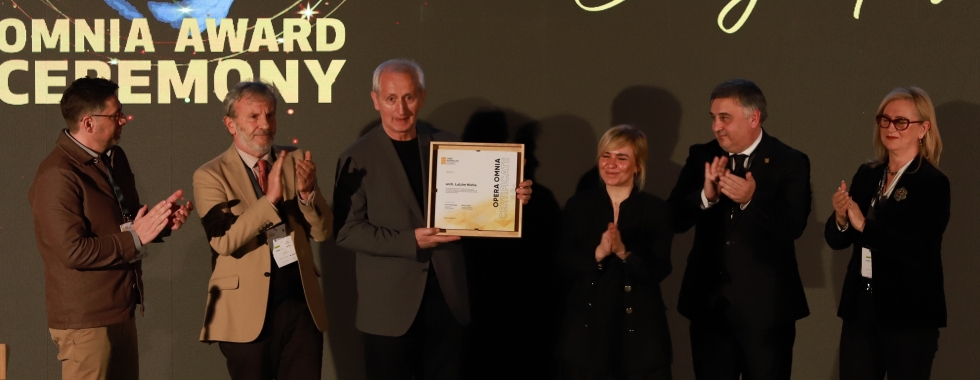
BIOGRAPHY
Lulzim Nixha is part of a larger group of Kosovo students who graduated as architects from this university. From 1979 to 1987, he was an assistant in the Department of Architecture of the Faculty of Construction and Architecture at the University of Prishtina, and from 1987 to 2010, he was a professor of Design of Public (Social) Buildings. Professor Arch. Lulzim Nixha, in addition to his academic work at the University of Pristina, has been quite active as an architect and in the field of design since his early days. Some of his projects, for which he is the primary author, have received awards and recognition for his achievements.
Among the projects are:
- Obiliq’s “Kosova B” Thermal Power Plant Restaurant (1983).
- Obiliq’s Thermal Power Plant Administration Building (Kosova B) (1984)
- Business Development, Ilixhe – Peja (1993)
- Germany’s Intering GmbH (1994)
- Baden Durenberg White House, Germany (1995)
- The Ministry of Education of Kosovo (MEST) facility in Pristina (2002)
- Pristina City Bookstore (2009)
- Pristina, Hotel “International” (2011)
- Pristina (2014), ELKOS complex, etc.
Some of the awards won by Professor Nixha are:
- Borbe’s reward for Kosovo – Belgrade (1987)
- The First Prize of the Spring Salon in the category of Applied Arts of Kosovo – Prishtina (1988)
- Silver plaque for exceptional contribution to the projects of the Thermal Power Plant “KOSOVA B” – Prishtina (1984)
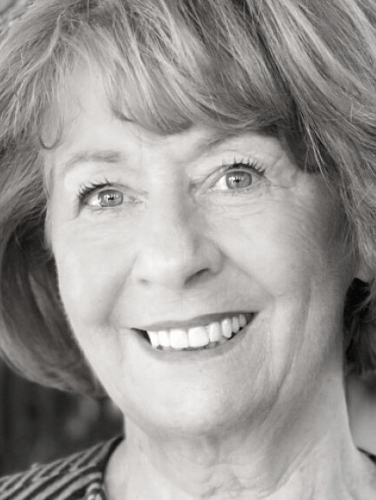
MAJDA KREGAR
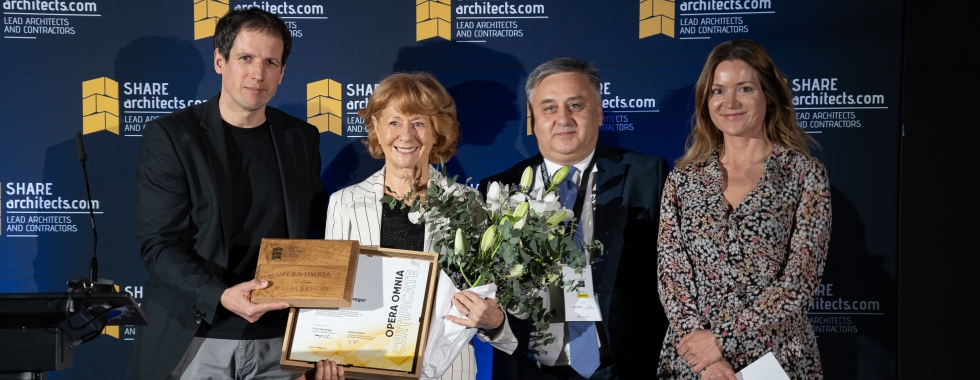
BIOGRAPHY
The architect Majda Kregar belongs to the generation of Slovenian architects who came of age during the golden age of the Ljubljana School of Architecture.
Her oeuvre is extensive, ranging from small residential projects to the Zagreb bus station and the Bežigrajski dvor commercial and residential complex in Ljubljana. Together with her colleagues Miha Kerin and Edo Ravnikar Jr, she has been deeply involved in the renovation and revitalisation of Ljubljana Castle for decades.
The Ljubljana Castle is the crown of the city of Ljubljana. Today’s image of the Ljubljana Castle is the result of a five-decade-long renovation process that began in 1969, when Edo Ravnikar Jr. won the first prize in the competition for the renovation of the castle and involved Majda Kregar and Miho Kerina in the implementation of the renovation project. Their work is characterised by a holistic approach, in which the renovation is thought through down to the last detail.
The design of the individual rooms differs according to the period, but they are united by a respectful attitude towards the heritage and a strong authorial touch, characterised by inventiveness and virtuosity of detail. As time went by, the structural elements of the castle were stabilised and renovated. A new multi-purpose cultural centre was created, with its own technical infrastructure, and a funicular railway was built to link the castle to the town.
Angel Zahariev & Assen Milev
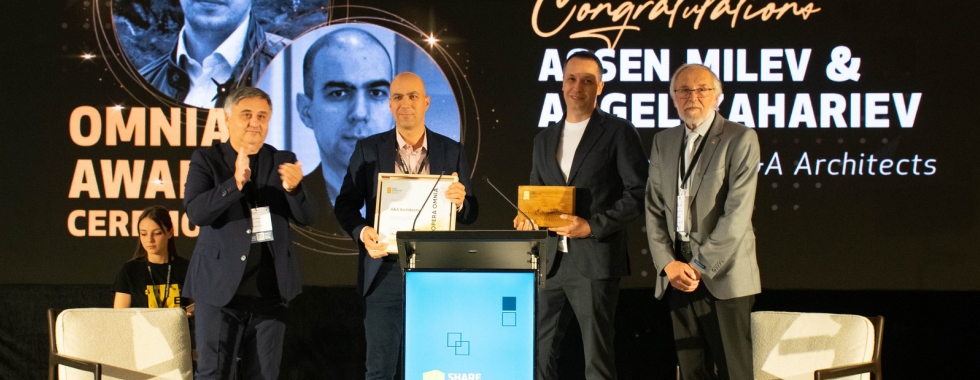
BIOGRAPHY
Angel Zahariev
Born in 1978 in Sofia, Bulgaria, Angel Zahariev graduated in MA Architecture from UACG in Sofia. In 2004, he got a post-diploma specialization at the Institute of Housing and Urban Development Studies.
In 2005, Angel Zahariev founded the architectural bureau A&A Architects with Assen Milev. As a manager and leader of the design team, he has been rewarded with multiple professional awards: Architect of the Year, Building of the Year, Archinova, and Student of the Year, among others.
Angel Zahariev has worked in the design of many key projects that have significant influence in contemporary Bulgarian architecture, such as Business Park Sofia, Capital Fort, Sky Fort, Muzeiko or GTower.
Moreover, he has been a lecturer, tutor, jury, and participant in numerous workshops, symposiums, conferences, and competitions in Bulgaria and Europe.
Angel Zahariev is one of the founders of Grupa Grad NGO, where together with other young and popular Bulgarian architects he strives for positive change in public architecture and urban planning in Bulgaria.
Assen Milev
Arch.Milev received his Masters degree in Architecture in 2002 at UACG (University of Architecture, Civil engineering and Geodesy) in Sofia, Bulgaria.
In 2005, Assen Milev together with Angel Zahariev founded the architectural bureau A&A Architects.
As a manager and leader of the design team, arch. Assen Milev has worked in the design of many key projects, which has significant influence to the contemporary Bulgarian architecture and has been rewarded with multiple professional awards.
Prior to establishing A&A Architects, arch.Assen Milev was in charge of the design and development of Business Park Sofia and a number of other office and residential projects.
Arch. Assen Milev has a membership and full license from the Bulgarian Chamber of Architects.
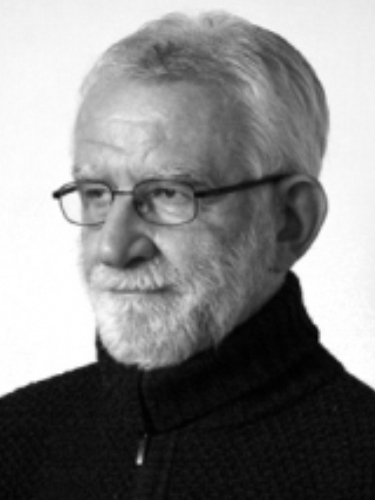
Theoharis David
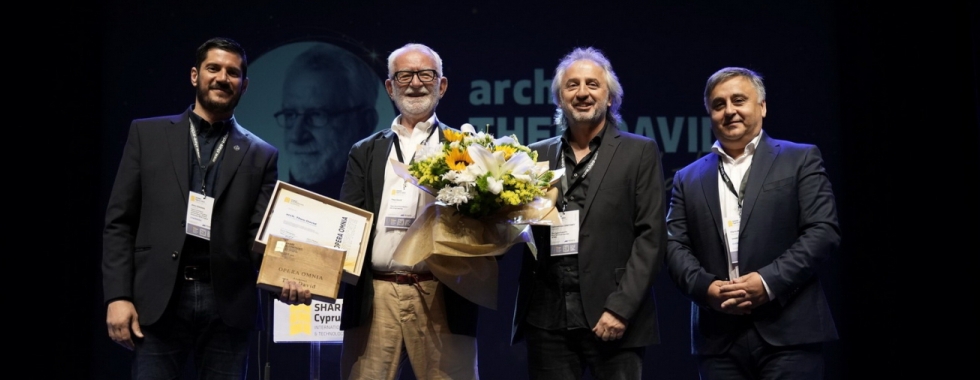
BIOGRAPHY
Through his unwavering commitment, innovative research, and notable accomplishments, he has left an indelible mark on the field of architecture and urban planning. This prestigious recognition further solidifies his position as a respected figure and an inspiration to aspiring architects worldwide.
The world of architecture has been greatly influenced by the expertise and dedication of Theo David FAIA Emeritus, an American-born architect and educator of Cypriot descent. With a thriving practice in both New York City and Nicosia, Cyprus, David has made significant contributions to the field through his extensive teaching career, architectural achievements, and involvement in various prestigious organizations.
Theo’s impressive career in academia spans over several decades. He is a tenured Professor of Architecture and the former Faculty President at Pratt Institute, where he has been teaching architectural design at both the Graduate and Undergraduate levels since 1969. As the Chairman of Graduate Architecture, he has played a vital role in shaping the next generation of architects. In recognition of his exceptional teaching abilities, David was awarded the esteemed Distinguished Teacher Award in 2013-2014, and he currently holds the title of Institute Professor at Pratt Institute.
Education has always been a cornerstone of Theo’s journey. He holds degrees from Pratt Institute and Yale University, where he had the privilege of studying under renowned architectural visionaries. Under the mentorship of Serge Chermayeff and Paul Rudolph FAIA, he honed his skills and developed a unique architectural perspective. These formative experiences have had a lasting impact on his approach to design.
As a founding principal of Theo David Architects TDA+KAL, Theo has successfully translated his architectural vision into realized projects. His work has been honored with numerous awards, including the New York City Bard Honor Award, the Cyprus State Award for Architecture, and the CAA Prize. His projects have also been recognized internationally, with nominations for the European Union Mies van der Rohe Award and shortlisting at the World Architecture Festival.
Beyond his architectural practice, Theo David has taken on various advisory and leadership roles. He has served as an advisor and visiting professor at the University of Cyprus, a nominator for the Aga Khan Awards, and Chair of the Distinguished Architecture Awards of the New York Chapter of the AIA. His contributions extend to organizations such as the Cyprus-US Chamber of Commerce, the Cyprus Cultural Foundation, and Pratt Institute, where he served on the boards.
Theo David’s expertise and insights have been widely sought after. He has been invited to lecture and share his knowledge in prominent cities around the world, including Athens, Shanghai, London, Barcelona, and Rome. Additionally, he has served as a guest critic at leading American and European Schools of Architecture, nurturing the talents of aspiring architects.
His influential contributions have earned him esteemed honors, including being named a “Great Cypriot” and his work being voted as a “Pratt 125 Year Icon.” Furthermore, he has been recognized for his services to the University of Cyprus and nominated by NYC/AIA for the ACSA/AIA Topaz Medallion for Excellence in Teaching. His architectural legacy is preserved in the archives of the Pratt Institute Library and the New Benaki Museum of Athens.
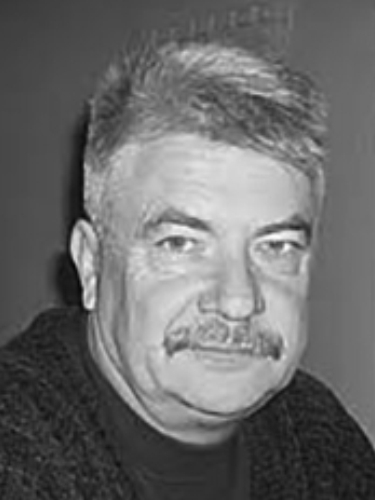
Nicolae Țaric
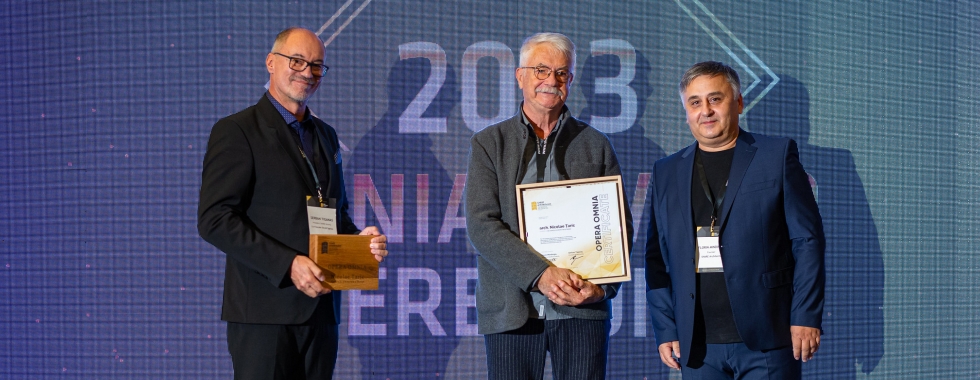
BIOGRAPHY
Nicolae Țaric a absolvit în anul 1976 Universitatea „Ion Mincu” din București, iar de-a lungul timpului, prin măiestria sa în arta arhitecturii, și-a pus amprenta pe diferite proiecte impresionante. Nicolae Țaric este membru fondator al Ordinului Arhitecților din România (OAR), iar în anul 1990 a pus bazele Agenției de Arhitectură și Design (ADA), care în scurt timp a devenit unul dintre cele mai prestigioase birouri de proiectare din țară. În câțiva ani, ADA a realizat proiecte remarcabile, inclusiv restaurarea clădirilor monumente istorice și dezvoltarea de clădiri în mediul urban. Centrul Civic și Valea Cetății pietonal Brașov, Turnul Ecaterinei, o prezență emblematică a cetății Brașovului, sunt câteva dintre proiectele care poartă semnătura arh. Nicolae Țaric. Portofoliul ADA impresionează prin diversitate, cuprinzând sedii de bancă, clădiri de birouri, facilități de producție și cercetare, hoteluri și locuințe, numeroase proiecte obținând recunoaștere și premii în cadrul competițiilor locale și naționale.
„Cariera unui arhitect trebuie apreciată în funcție de relevanța contribuției pe care acesta a adus-o, prin tot ceea ce a realizat, la starea arhitecturii și a culturii profesiei în comunitatea în care trăiește. Influența poate fi locală, regională, națională sau internațională, toate nivelurile fiind importante pentru arhitectură. Evaluarea acesteia trebuie să țină cont de contextul vremurilor și locurilor. Cariera arhitectului pe care îl apreciem astăzi, Nicolae Țaric, începe în 1980, la Brașov, unde se va derula în următorii 43 de ani și unde continuă și astăzi. El este unul dintre arhitecții care a lucrat în ultimele două regimuri, cel comunist și cel al tinerei democrații de tranziție, așa cum s-a întâmplat încă de două ori în secolul 20, la trecerea peste cele două războaie mondiale, care au adus mari schimbări pentru România. Kos Karoly, Duiliu Marcu, G.M. Cantacuzino, Georges Cristinel și alții au conturat vremurile prin arhitectură cu o continuitate benefică, pe atunci. După 1989, alți arhitecți remarcabili au continuat să profeseze solid, ca în cazul lui Nicolae Țaric. Acesta își definește propriul parcurs ca fiind format din următoarele perioade:
Institutul de proiectare – Proiect Brașov, în care îl are ca mentor pe Iancu Rădăcină, lucrând la mari ansambluri urbane, premiate de UAR.
Resetarea – stagiile și ADA, în care este influențat de întâlnirea cu Constantin Iotzu, participă la câteva stagii în străinătate și fondează ADA, Agenția pentru Design și Arhitectură.
Tranziția – următorii 20 de ani, în care continuă să lucreze proiecte diverse formând și menținând o echipă care obține o reputație consolidată în Brașov, fiind premiat la Bienala Națională de Arhitectură, de revista Arhitext Design și Ministerul Culturii.
Perioada recentă – decada 2014-2023, în care activitatea continuă, realizând lucrări nominalizate și premiate de OAR.
Impactul activității sale asupra Brașovului și regiunii, dominat autoritar în perioada anterioară de Iancu Rădăcină este continuat de discipolul său, Nicolae Țaric prin planurile de urbanism, arhitectura în manieră proprie și restaurarea clădirilor de patrimoniu. Poate fi caracterizat ca un profesionist care nu face compromisuri, care își construiește minuțios convingerile și viziunea, consultându-se cu personalități și persoane relevante, creator de echipă, având întotdeauna o opinie critică și oferind leadership. Premiul Opera Omnia se acordă de către Societatea SHARE Architects pentru întreaga carieră în care Nicolae Țaric a realizat planuri importante pentru oraș, clădiri care răspund diferitelor programe de arhitectură publice și private, fiind în tot acest timp cea mai importantă voce a profesiei la Brașov, un lider al comunității de arhitecți în organizațiile profesionale și un mentor pentru reprezentanți ai noilor generații”.
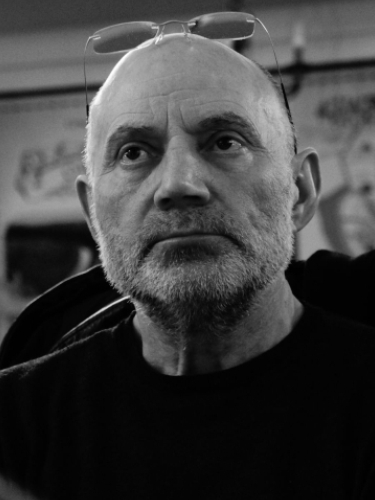
GHEORGHE BULAT
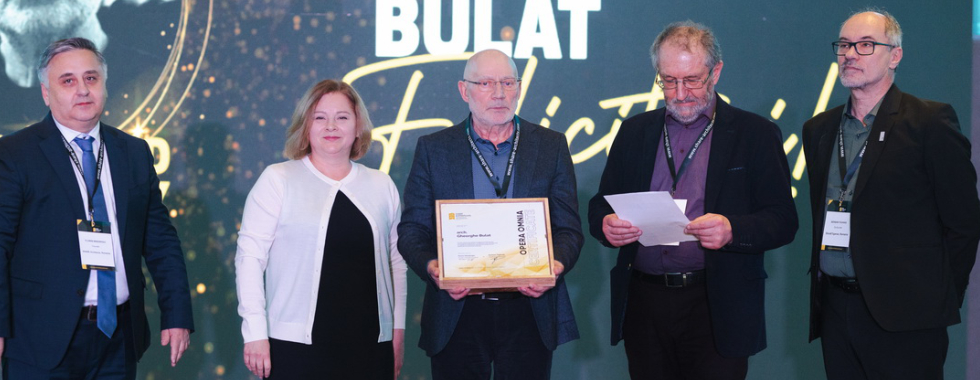
BIOGRAPHY
Gicu Bulat s-a născut în Moldova și a obținut diploma în arhitectură în anul 1987 în cadrul facultății Urbanism și Arhitectură a Institutului Politehnic (astăzi Universitatea Tehnică a Moldovei). El și-a început cariera la Institutul Chișinău Proiect, avansând cu o dinamică excepțională într-o scurtă perioadă de 3 ani, de la funcția de arhitect până la funcția de arhitect-şef de proiect.
În perioada 2003-2005 a fost arhitect-șef al companiei de proiectări Axis Mundi SRL, iar în anul 2005 a înființat propriul birou de proiectări Arhstudio Cub.
Arhitectul Gicu Bulat a promovat prin opera sa ideea de arhitectură ca expresie a căutării, cercetării și investigării intelectuale și emoționale. Gheorghe Bulat se distinge prin opera realizată, prin conservarea și, mai ales, utilizarea inovativă a patrimoniului construit, prin promovarea arhitecturii de valoare și apărarea celei care este în pericol.
Și-a lăsat amprenta asupra Chișinăului, repertoriul preocupărilor sale profesionale fiind foarte larg – de la case de locuit individuale, la obiective ce țin de domeniul urbanisticii sau restaurării patrimoniului cultural: Complexul Catedral Nașterea Maicii Domnului, Monumentul istoric de importanță națională Clădirea fostului gimnaziu pentru fete fondat de principesa N.G.Dadiani – actualul sediu central al Muzeului Național de Artă al Moldovei, Restaurarea şi reconstrucţia Sediului SA Moldacom, str. București, Chișinău, Restaurarea Liceului român-englez “Mircea Eliade”, Chişinău, Restaurarea, reconstrucţia şi extinderea Teatrului Republican pentru tineret “Luceafărul”, str. Veronica Micle, Chişinău, Restaurarea şi reparaţia capitală a edificiului Sala cu Orgă cu amenajarea teritoriului.
Acesta a surprins ca arhitect prin tectonica inconfundabilă a clădirii Băncii Mondiale din Republica Moldova în centrul istoric, ca o adevărată demonstrație de putere a arhitecturii anilor 2000 de a dialoga cu istoria secolelor precedente.
Ca semn al recunoaşterii acestor realizări, dar şi al preţuirii unui travaliu de excepţie, Comunitatea internațională SHARE Architects este onorată să îi acorde arhitectului Gicu Bulat premiul SHARE OMNIA AWARD în cea de-a doua Ediție a forumului SHARE la Chișinău.

KADRUSH GREZDA
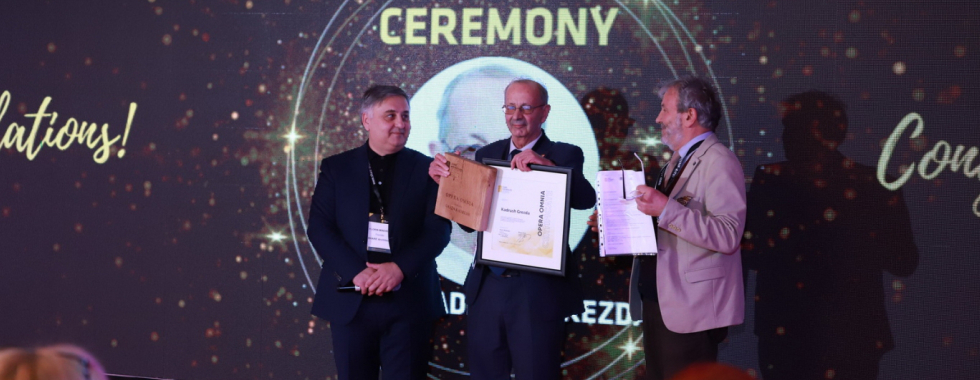
BIOGRAPHY
Graduated from the Faculty of Architecture and Urbanism of the University of Sarajevo, Mr. Grezda represents a generation of Kosovo Albanian architects, who dedicated their knowledge and experience for shaping the modernist period in Kosovo’s architecture and urbanism.
Throughout his career, Mr. Grezda was head of the department of urbanism in the Municipality of Gjakova, head of the public housing enterprise in the city of Gjakova, and head of the team for the design and construction of the Sports Hall in the same city. He was also lead architect and urbanist of two local studios, where he designed and supervised a number of both public and private buildings.
Mr. Grezda’s contribution extends also in the field of academia, as he was also a teaching assistant at the Faculty of Architecture at the University of Prishtina.
Today, we will honor Mr. Grezda with the OPERA OMNIA award for his architectural creativity, thanking him for his high contribution in the field of architecture and urban planning.
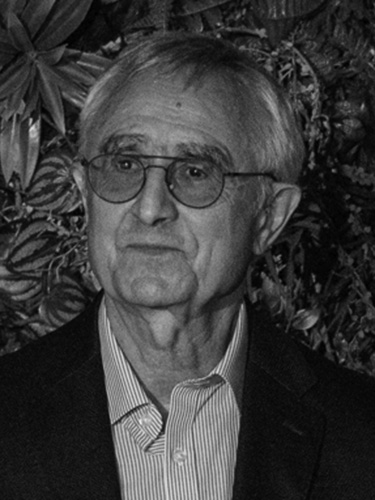
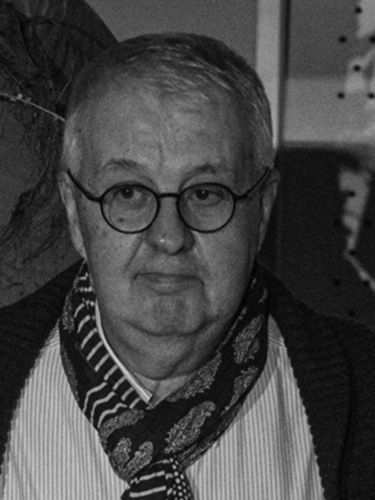
Florin Medvedovici, Adrian Zerva
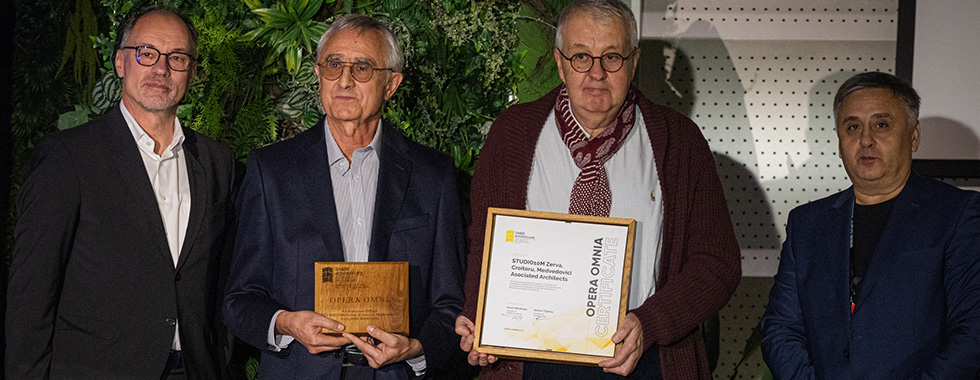
BIOGRAPHY
Florin Medvedovici and Adrian Zerva are Studio 10 M, Zerva, Croitoru, Medvedovici, an architecture firm that has demonstrated its professional maturity during over three decades of transition and development of post-communist Romania. They have realized and are realizing projects for powerful investors during these periods, foreign or local.
They expressed themselves as designers and concepts that start from a blank sheet, in search of a solution, or of existing architecture that needs to be relaunched with dignity in a new life cycle. They coordinated complex projects in which they contributed with many contributors of different specialties, taking care that the result was harmonious. They were consultants for major projects and managers of the not-so-simple investment development processes.
The projects that make up the portfolio of Studio 10 M are predominantly private, complex, and extensive, carried out in a team or teams. They mainly cover the business, office, retail, residential and production areas, that is, the area where business is manifested. A consistent chapter is also that of the restorations of serious constructions from other times, brought back to the present. We remember important moments marked by works, some of which brought the authors awards: Mobexpert, Swann Office Park, Piața Obor, Piața Timpuri Noi, Dacia One, Țiriac Tower, Polonă 7 or Crama Domeniile Coroanei Segarcea. The architecture of those celebrated now is robust, and serious, looking towards classical modernism but also contemporary aspirations, always in search of a balance.
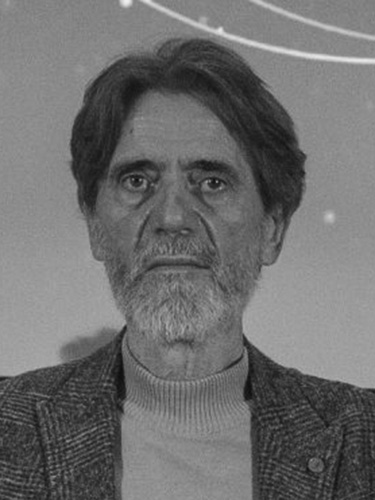
Djoko Radovanovic
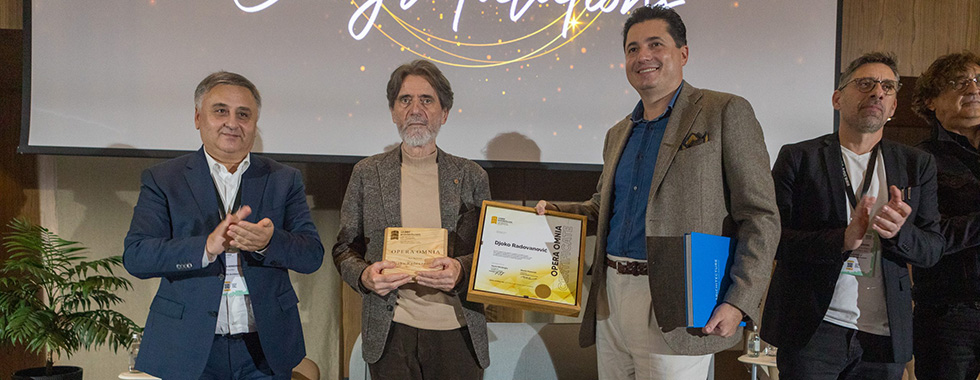
BIOGRAPHY
The north-macedonian architect received the distinction at the SHARE Skopje 2024 during a ceremony which took place at the Skopje Marriott Hotel. The founder of RADO Engineering became the 31st recipient of this prestigious accolade, awarded by the SHARE Architects Society to luminaries from Central and Southeastern Europe for their profound contributions to architecture and inspiration to future generations. Radovanović is the fourth North Macedonian architect to receive this recognition.
Born in Podujevo in 1949, Radovanović graduated from the Faculty of Architecture in Skopje during the city’s post-earthquake reconstruction, a period that shaped his modernist perspective. Over a career spanning decades, he has designed 124 projects that define contemporary Macedonian architecture, including landmarks such as the Soravia Center and Resort, SC Jane Sandanski, and Villa Darko Pančev. His company, RADO Engineering, established in 1999, is known for blending innovation with elite architectural design and has garnered numerous awards.
During the ceremony, Professor Mishko Ralev, Dean of the School of Architecture and Design, lauded Radovanović’s enduring impact on Macedonian architecture. Ralev highlighted his creative evolution from prefabricated solar houses to major urban projects like the World Trade Center in Skopje. Radovanović’s work balances modernist and postmodernist influences, producing projects like the award-winning “House with a Special Mode of Living” and “Town House,” recognized internationally for their excellence in residential architecture.
Radovanović’s philosophy, emphasizing architecture’s commissioned nature and its relative success, encapsulates his dedication to creating structures that harmonize functionality, comfort, and artistry. His legacy inspires peers and future architects to envision sustainable and human-centric design.

